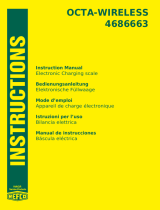
Hardware and software requirements
7
•
•
•
•
•
•
Do not place the computer in locations of high sound pressure levels, such as near a speaker.
High sound pressure levels may cause the hard disk to malfunction, causing recording to stop.
Ideally, the computer should be placed in a separate room from the PA speakers (the source of the sound).
However if the computer must be placed in the same room, take measures such as keeping it at a distance
from the speakers, placing sound-absorbing material such as acoustic baffles or blankets between the
computer and the speakers, or place commercially available sheets of vibrational insulating material between
the floor and the computer.
Use an uninterruptable power supply (UPS) to provide power to the computer and the audio interface.
If the power supply should fail, you'll need to stop recording, save the data, and shut down the computer
completely.
Be sure to disconnect the Ethernet cables connected to the REAC system before you shut down the
computer, while the computer is powered-off, and before you restart.
If you start up, restart, or shut down the computer while the REAC system is connected to your computer via
Ethernet, the REAC system may experience problems such as dropouts. Do not connect the Ethernet cable
until the operating system (Windows) has finished starting up.
You must turn the FA-66's DIGITAL IN button OFF before you power-on the REAC system.
After the REAC system has started up, turn the FA-66's DIGITAL IN button ON.
Never connect the computer to the Internet etc. after making the settings described in this document.
Later in the procedure described here, we will be disabling functions such as Windows Update and security
settings to allow recording to occur without dropouts. This means that the computer will be in a state of
lowered security, making it vulnerable to computer viruses or other malicious software.
If you will be connecting a storage device such as an external hard disk or a USB flash drive to the
computer, or inserting media such as a CD-ROM or DVD-ROM into the computer after making the
settings described in this document, use a different computer to perform a virus check on that
storage device or media before you connect or insert it.
Later in the procedure described here, we will be disabling functions such as Windows Update and security
settings to allow recording to occur without dropouts. This means that the computer will be in a state of
lowered security, making it vulnerable to computer viruses or other malicious software.
When monitoring the sound from the REAC system via the recording system, there will be
approximately one second of latency. Since additionally-recorded audio tracks will need to be offset
relative to previously-recorded tracks, this system is not suitable for use in multitrack recording
(overdubbing).
* Please be aware that Roland Corporation and Cakewalk Inc. USA accept no responsibility, neither financial
nor other, for any damages, whether direct or indirect, that may occur due to any malfunction or any loss of
recorded data.




















